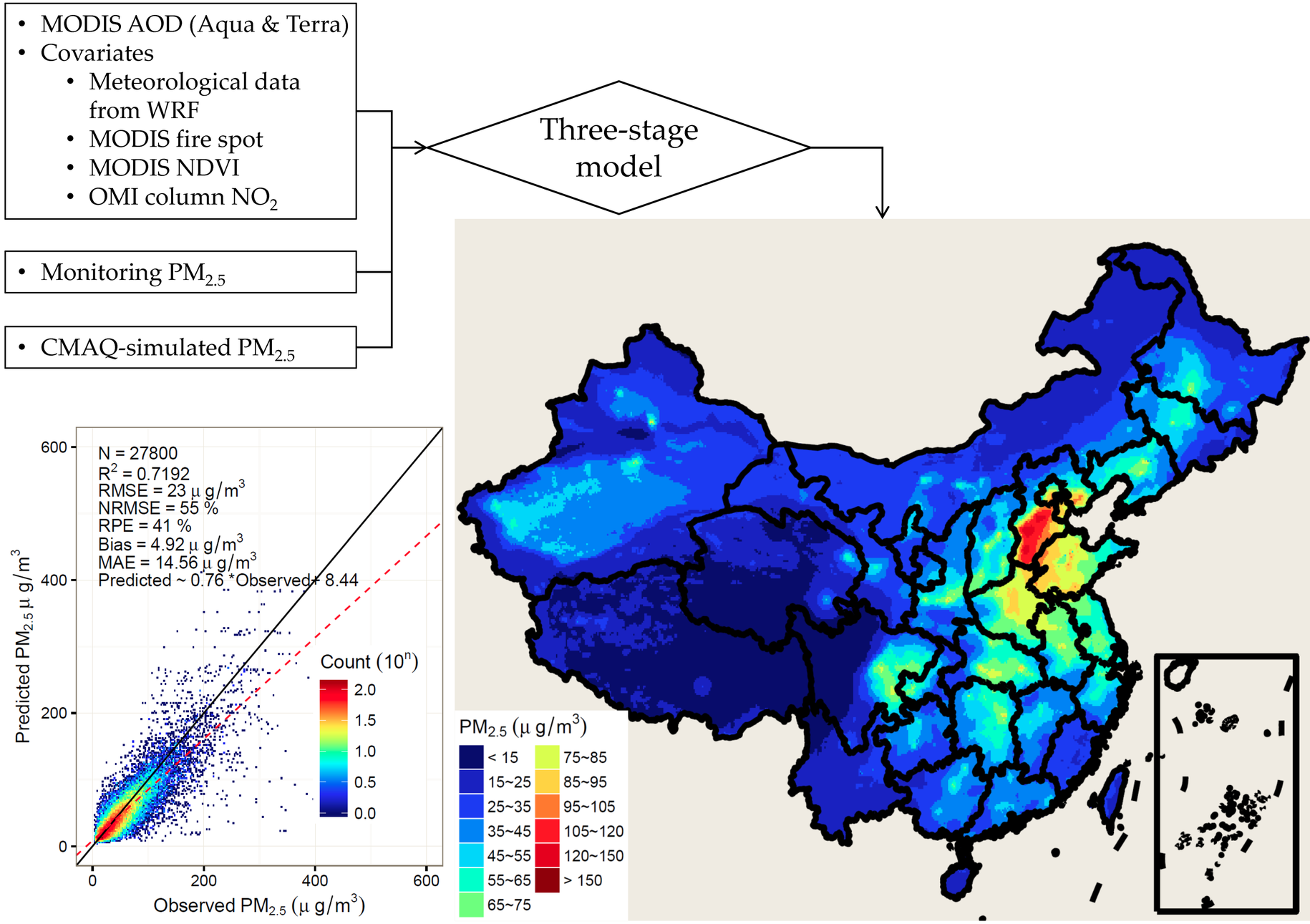Estimating ground surface PM2.5 with fine spatiotemporal resolution is a critical technique for exposure assessments in epidemiological studies of its health risks. Previous studies have utilized monitoring, satellite remote sensing or air quality modeling data to evaluate the spatiotemporal variations of PM2.5 concentrations, but such studies rarely combined these data simultaneously. We develop a three-stage model to fuse PM2.5 monitoring data, satellite-derived aerosol optical depth (AOD) and community multi-scale air quality (CMAQ) simulations together and apply it to estimate daily PM2.5 at a spatial resolution of 0.1˚ over China. Performance of the three-stage model is evaluated using a cross-validation (CV) method step by step. CV results show that the finally fused estimator of PM2.5 is in good agreement with the observational data (RMSE = 23.00 μg/m^3 and R2 = 0.72) and outperforms either AOD-retrieved PM2.5 (R2 = 0.62) or CMAQ simulations (R2 = 0.51). According to step-specific CVs, in data fusion, AOD-retrieved PM2.5 plays a key role to reduce mean bias, whereas CMAQ provides all-spacetime-covered predictions, which avoids sampling bias caused by non-random incompleteness in satellite-derived AOD. Our fused products are more capable than either CMAQ simulations or AOD-based estimates in characterizing the polluting procedure during haze episodes and thus can support both chronic and acute exposure assessments of ambient PM2.5. Based on the products, averaged concentration of annual exposure to PM2.5 was 55.75 μg/m3, while averaged count of polluted days (PM2.5 > 75 μg/m3) was 81, across China during 2014. Fused estimates will be publicly available for future health-related studies.

